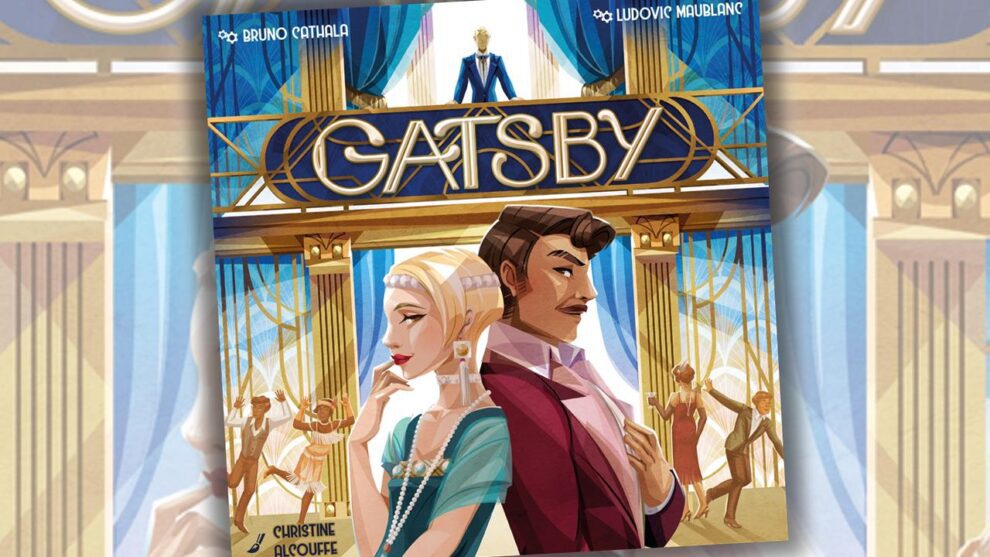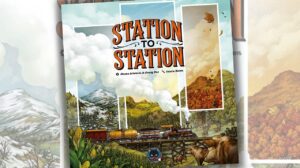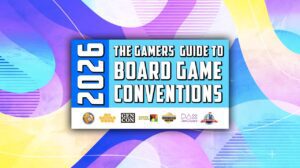Disclosure: Meeple Mountain received a free copy of this product in exchange for an honest, unbiased review. This review is not intended to be an endorsement.
When the name “Bruno Cathala” is on the side of the box, you best believe I’m gonna get that game to the table.
Cathala’s latest design is Gatsby (2025, Catch Up Games, released in the US by Pandasaurus), and it certainly has a looker of a cover. The illustrations by Christine Alcouffe are excellent, and the cover for Gatsby gives it the feel of a slick head-to-head affair with the literary character Jay Gatsby at its center. (In a sad twist, Gatsby himself is nowhere to be found in the actual game.)
Cathala’s name drew me in. The man who gave us 7 Wonders Duel (the same system used in The Lord of the Rings: Duel for Middle Earth), Five Tribes, Kingdomino and Sea Salt & Paper needs no introduction in my gaming circles. However, bonus points arrived in the form of a second, different name on the box: Ludovic Maublanc, one of the four credited designers for Dead Cells: The Rogue-Lite Board Game, my #1 game of 2024.
So, the design chops are here. As a game, Gatsby is fun, and it is a two-player-only game, ground that Cathala knows quite well (in addition to 7 Wonders Duel, he also designed Splendor Duel, which I think is the better version of that game). Strangely, despite being a fun time at the table, I’ve played it three times and I won’t play it again.
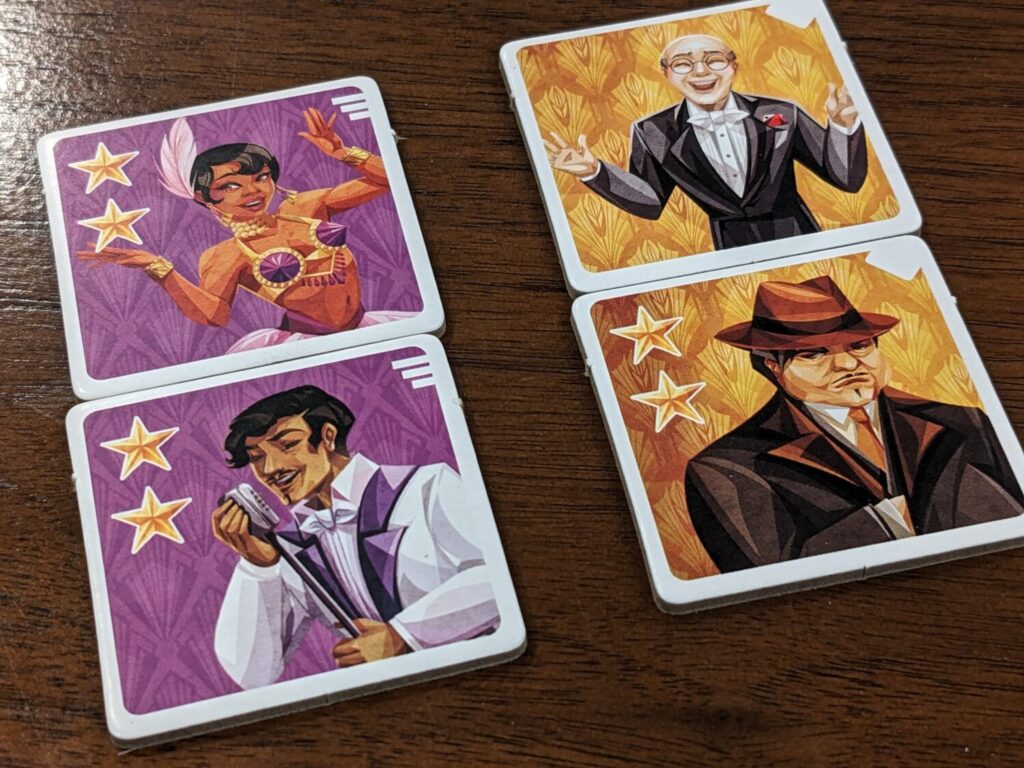
Cabaret
Gatsby is a two-player-only action selection game that has elements of area majority and set collection. Using the frame of the world described in F. Scott Fitzgerald’s novel The Great Gatsby, players take on the roles of Dorothy and James, rivals trying to curry favor with the most influential members of high society.
There are 12 character tiles in each game of Gatsby (from a pool of 15) that belong to one of five suits and show 0-3 stars. When a player collects all three characters from the same suit, or one from each of the five suits, they instantly win the game. Tiebreakers can occur if certain sections of the board run out of characters, in which case the player with characters showing the larger number of stars wins.
Gatsby’s main mileage comes from the three different action locations. There are four main actions in the game that allow the active player to interact with at most two of the three locations on the board: the Cabaret, the Finance Center, and the Racetrack. Each area is its own mini-game; the Cabaret is built around adjacent tile placement, whereas the Finance Center is a Euro-style track that turns into a race upward to gather characters and one-time bonuses. The Racetrack uses an area control mechanic that can also turn on a dime thanks to one of the game’s powers that allows for a player to swap a token with their opponent, shifting the balance of a specific track within the Racetrack area at just the right time.
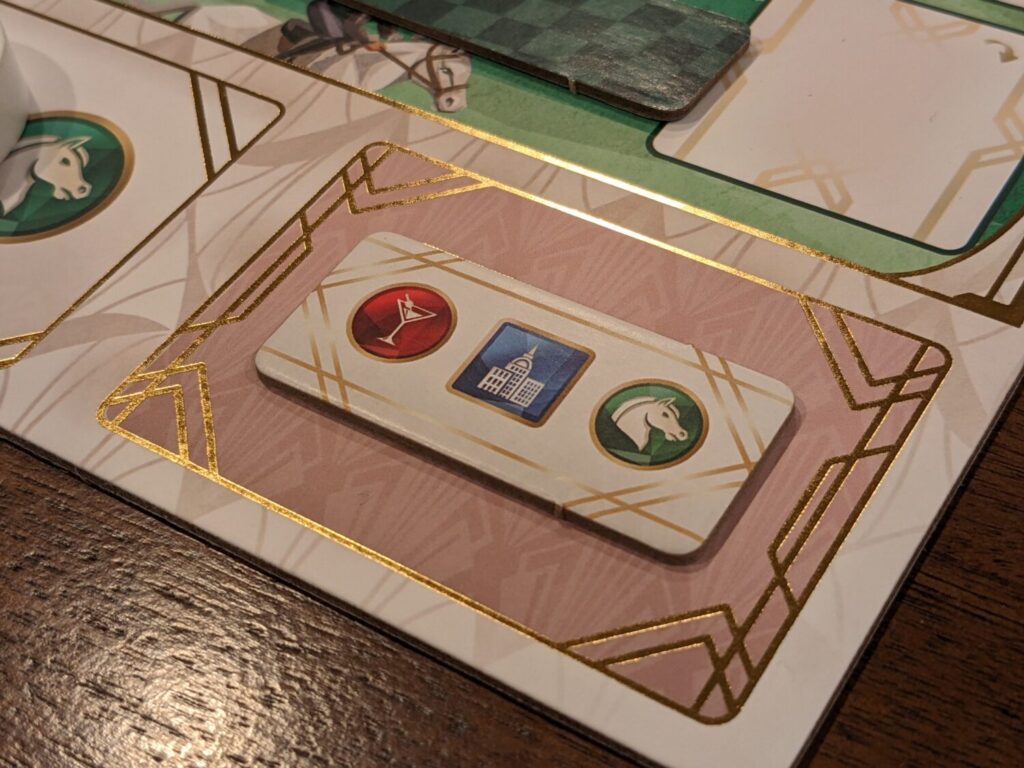
On the first turn of the game, a player selects one of these four actions. Successive turns require the active player to move the action marker (a handsome, chunky devil that can be flipped to show the face of the active player, Dorothy or James) to one of the other three actions, using a Scythe-like mechanic to ensure players are always taking a different action each turn. There’s also a bonus that allows the active player to order their opponent to take a specific action on their next turn, a strategic element that turned out to be surprisingly interesting and situationally powerful during each play.
Each mini-game offers something thinky. The Finance Center looks like a simple track, but it comes with a twist: the player who is higher on the track only gets to move up one space at a time when they take that action; the lower player gets two track moves. The Cabaret rewards a player who has connected tiles in their color from one edge of that tile area to the other with a character. However, there are four marked spaces where a player can grab a character if they occupy all of those spaces at any point during their turn.
The best part of the character setup—half of the characters are seeded face-down. So, there’s a memory/mystery element to the proceedings here also. It’s not so easy to grab the characters you want if you don’t know where all three of, say, the red characters are. And that’s nothing to say whether there are three red tiles in the game at all, thanks to the random trashing of three tiles from the pool into the box during setup.
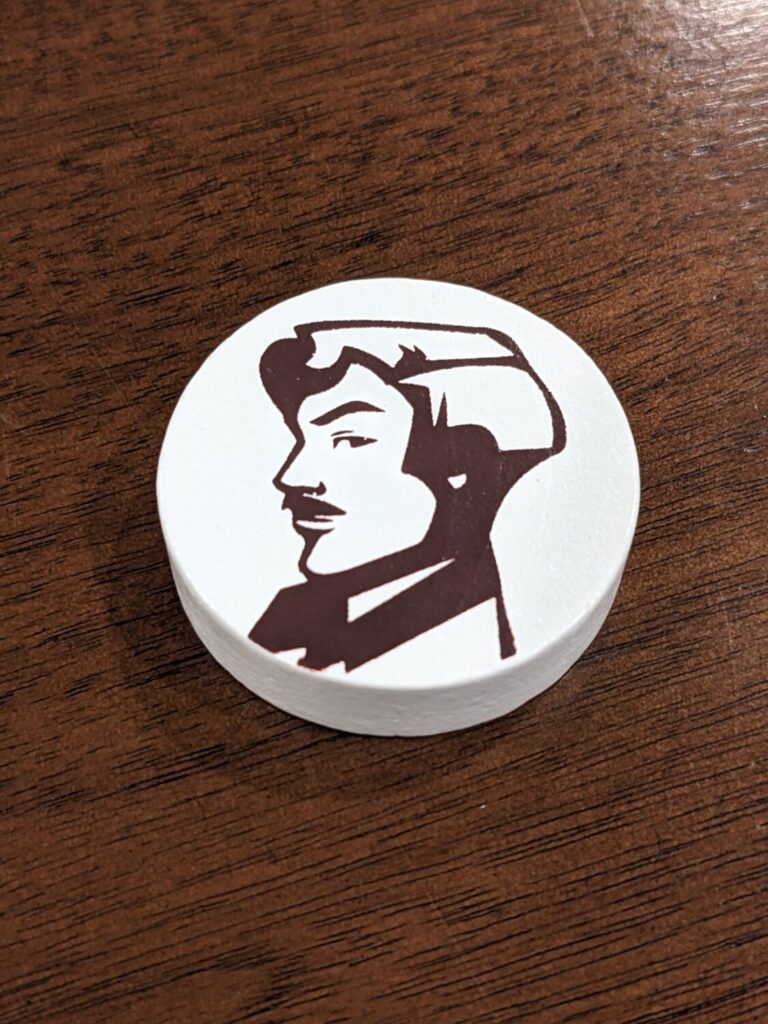
Fun, No Wow
I’ll give Gatsby this much: there’s a lot more going on than I guessed there would be when I read the rules. I did a live play of Gatsby with my wife and two plays on Board Game Arena with fellow contributor Kev Brantley, Each game ended under different circumstances, with one game going to the tiebreaker, and one game ending with a three-characters-of-a-single-suit win and a five unique characters win.
I loved that, and I loved that it feels like you are always one move away from ending the game on your own terms before someone else snakes the game away. On the flipside, I have enjoyed the Racetrack and the Financial Center areas more than the Cabaret…the Cabaret only has three Character tiles, so it’s a tricky place to invest heavily early on. (Of course, all the one-time bonuses you can find in that area make it required reading when considering the other two areas of the board.) The back-and-forth at the Racetrack is fun, while the tracks in the Financial Center always require a sideeye; setting up an opponent behind on the track to move forward two spaces to steal a character was a popular move in each of my plays.
Gatsby is quick; my in-person play with my wife, including teach, was about 25 minutes. The BGA plays were exceptionally fast; Kev and I did two games in under 30 minutes. So, Gatsby never overstays its welcome, that’s for sure!
Gatsby is another game in a long line of two-player-only games that I have enjoyed while playing it but not thought about again after finishing. 7 Wonders Duel is a game that got so many plays my cards were completely worn down—I actually threw it away when the cards couldn’t be shuffled any more. That won’t be the fate of Gatsby, but I absolutely recommend it for a player looking for their next quick two-player filler.


